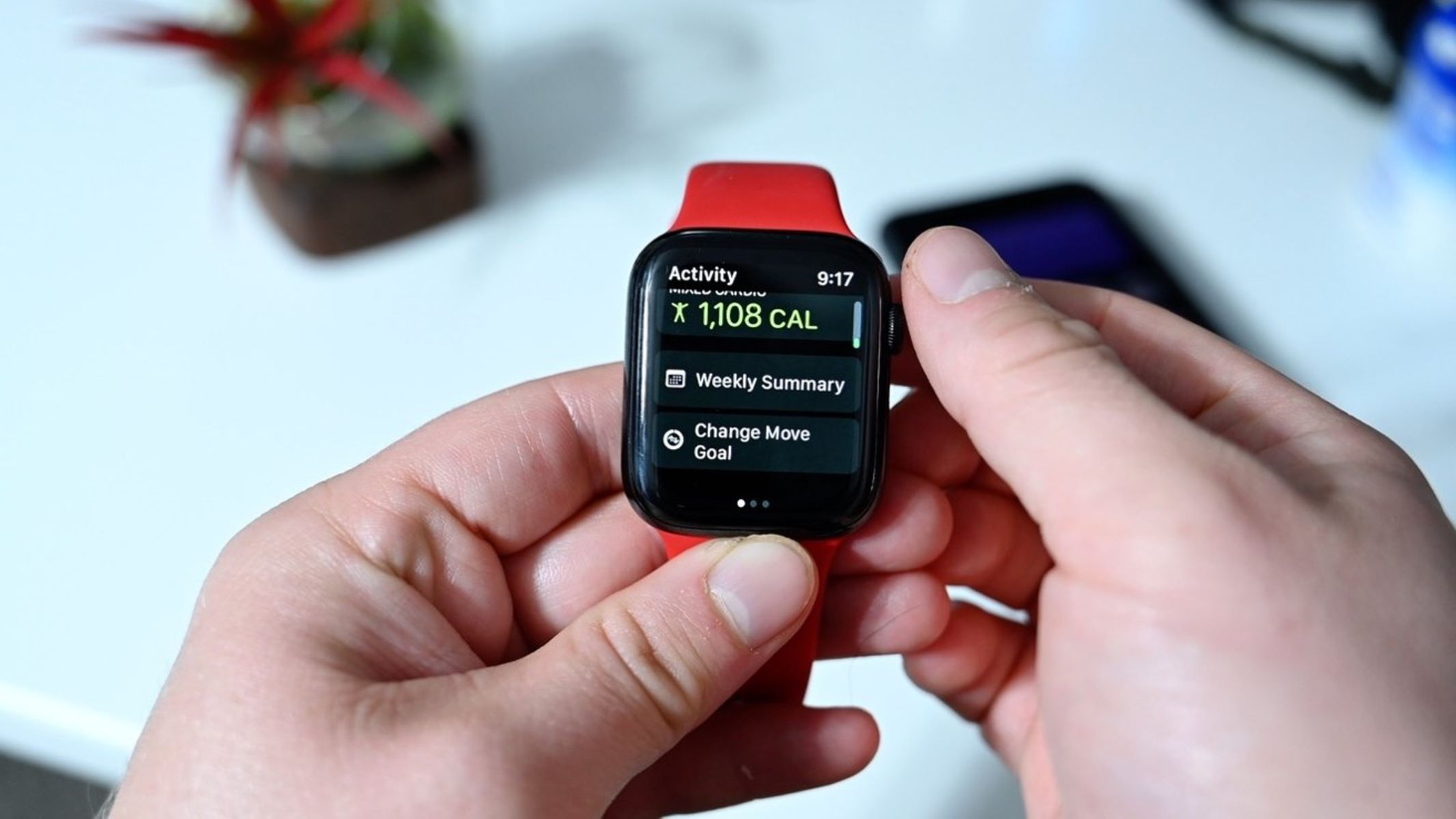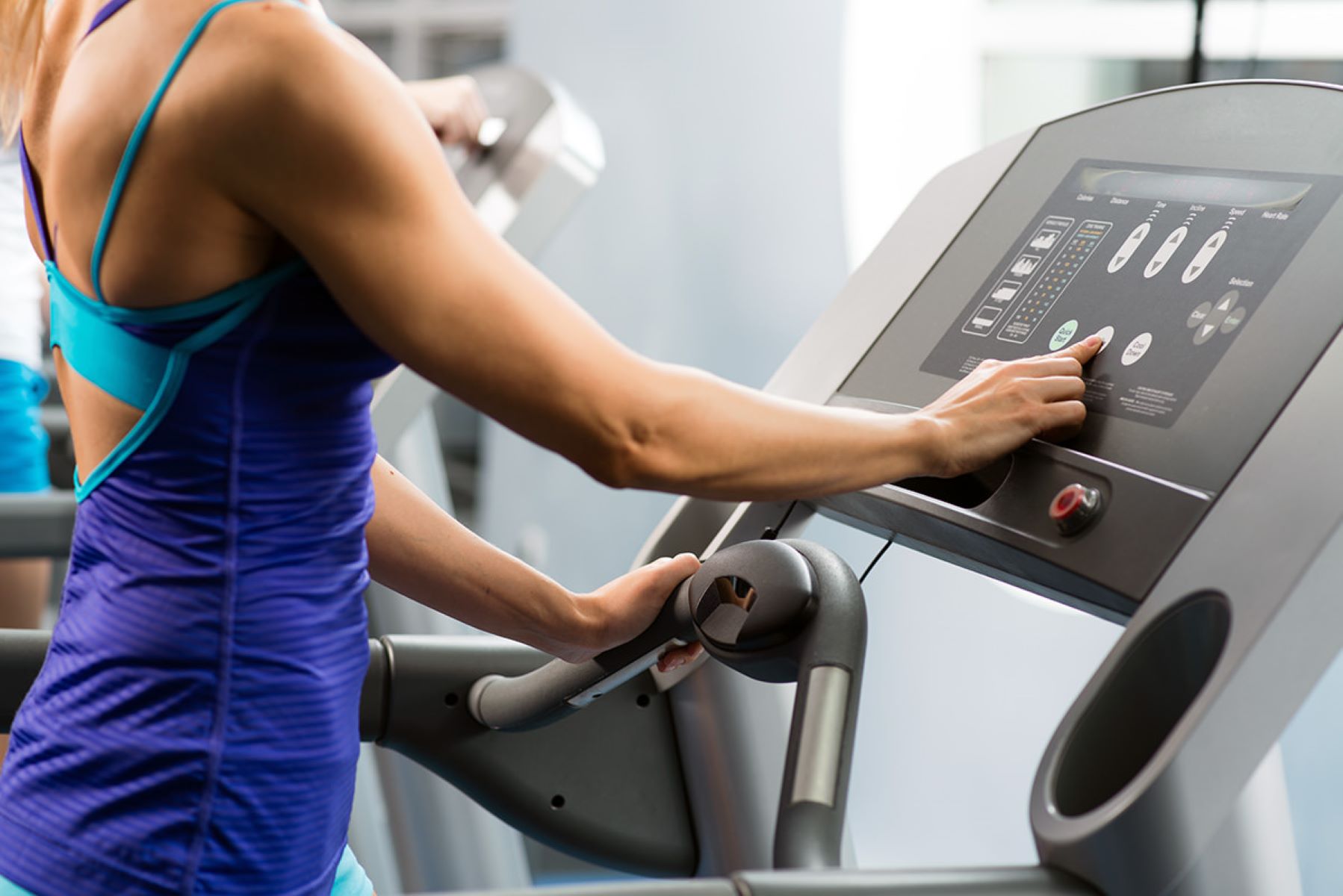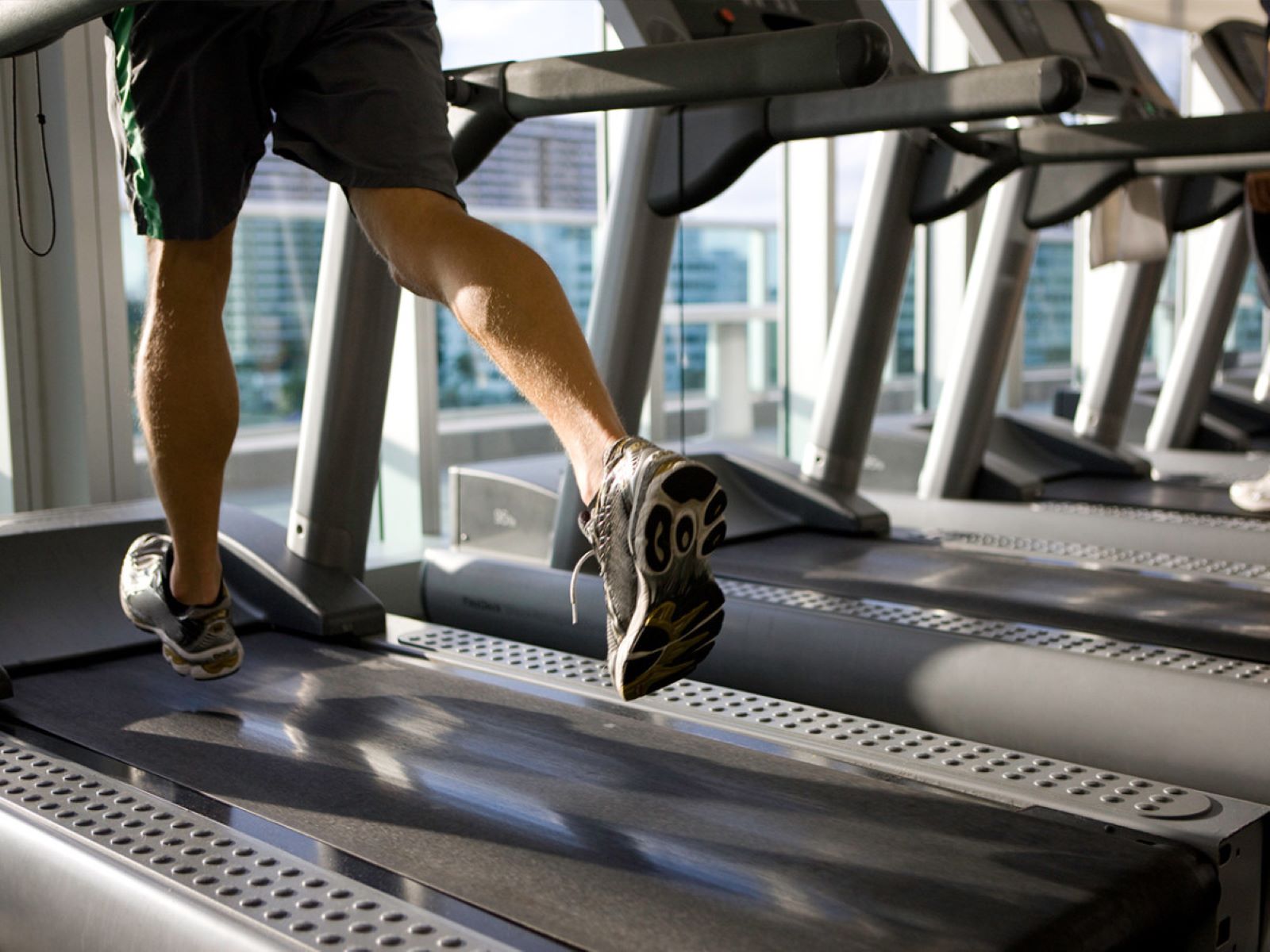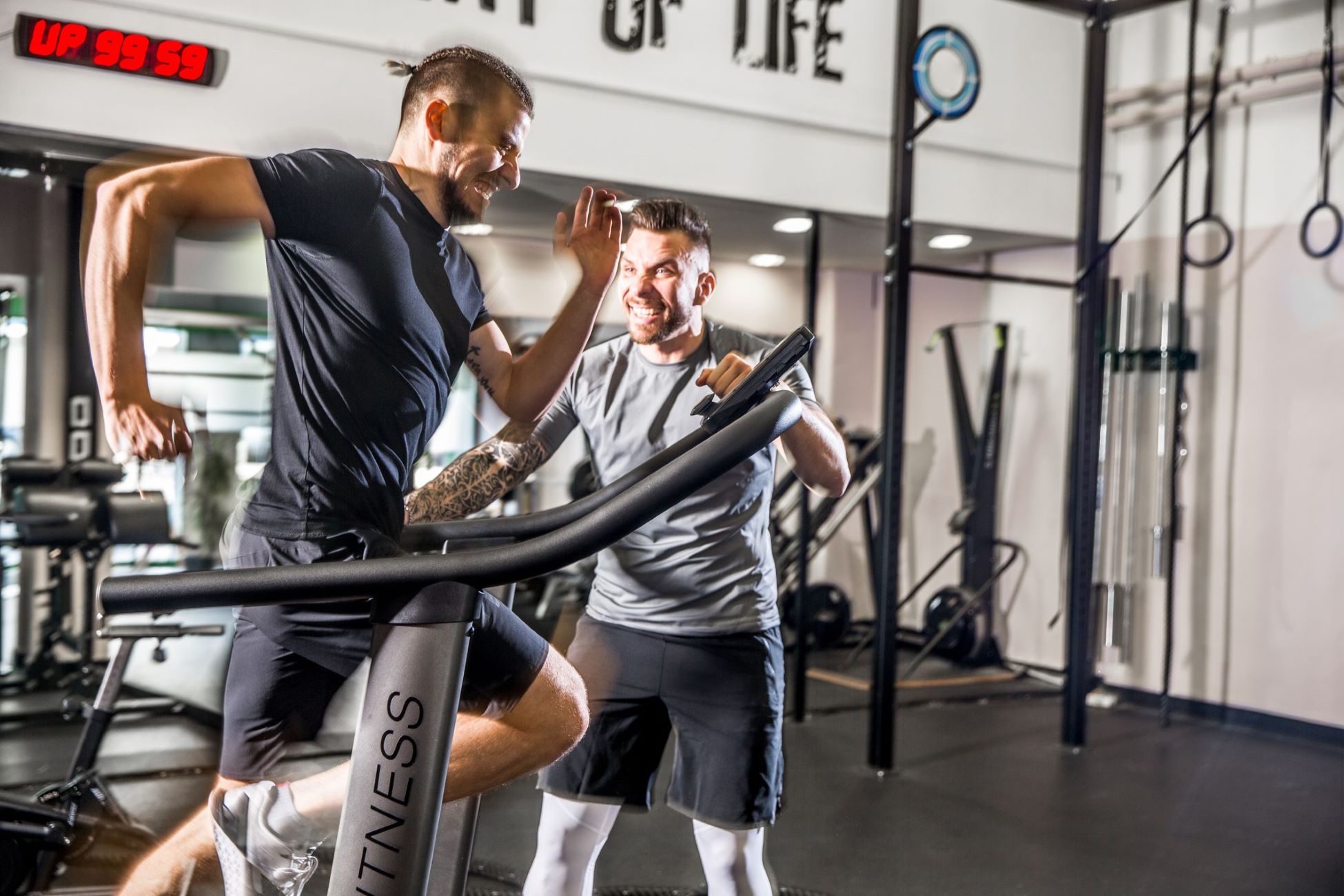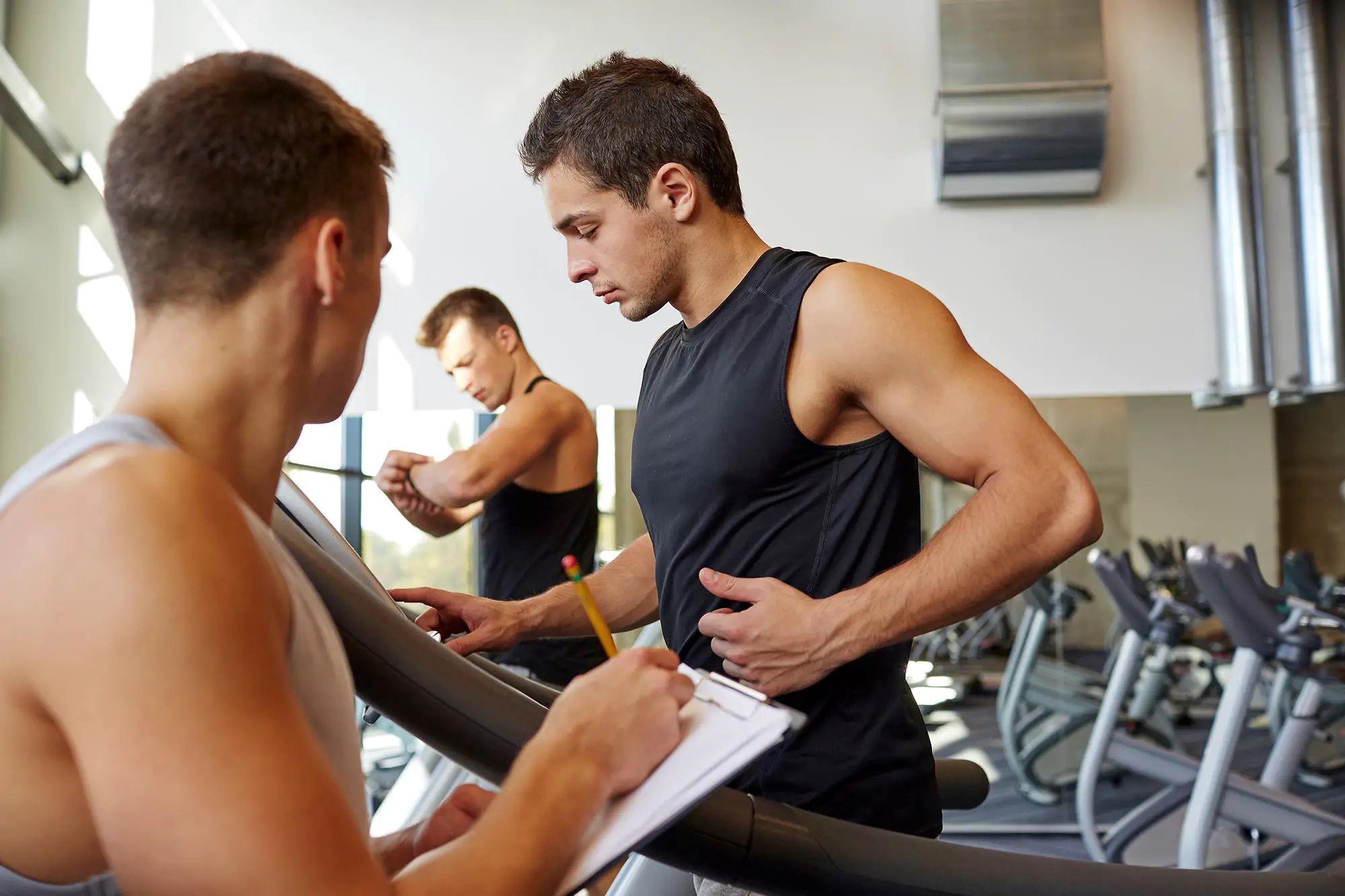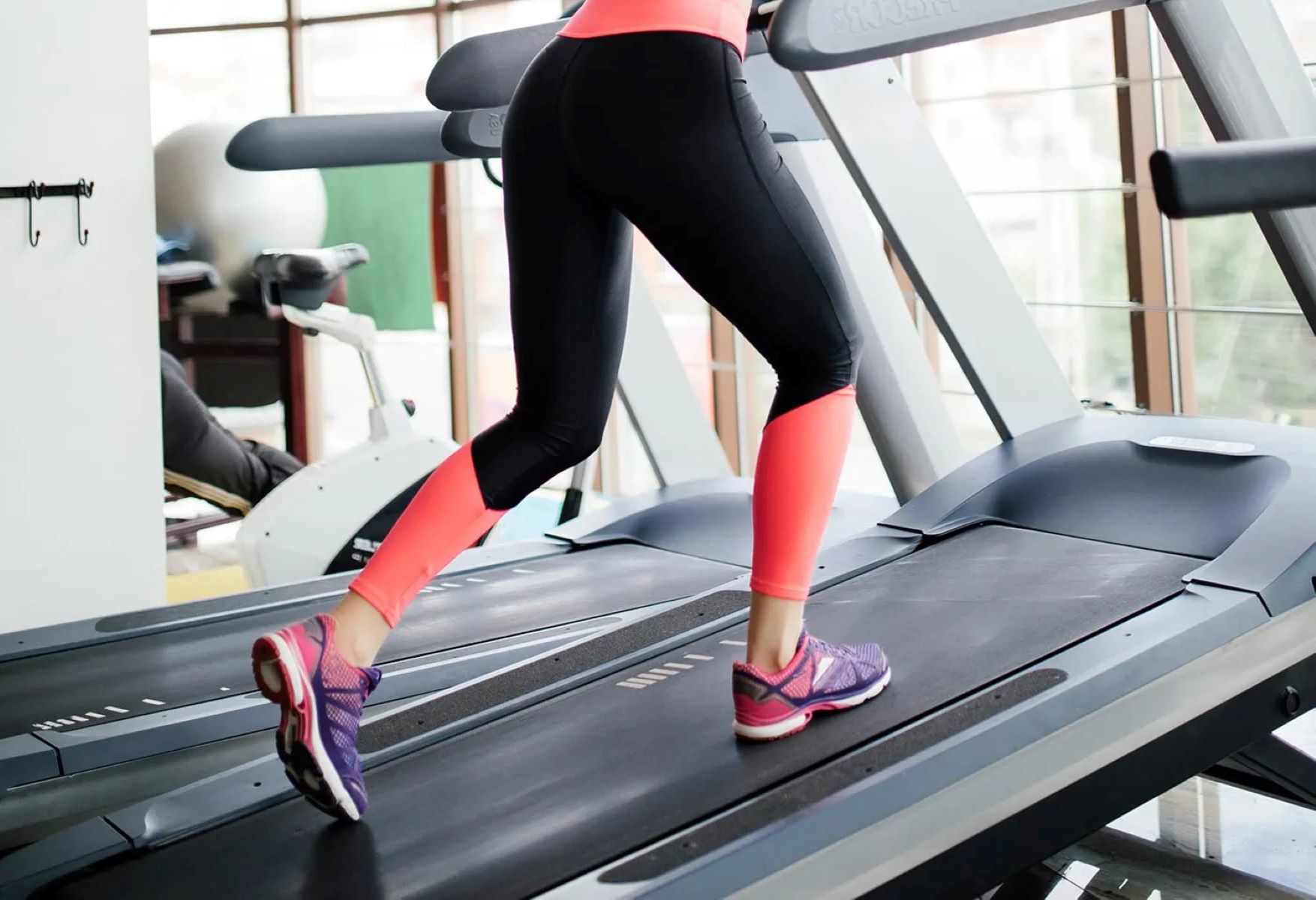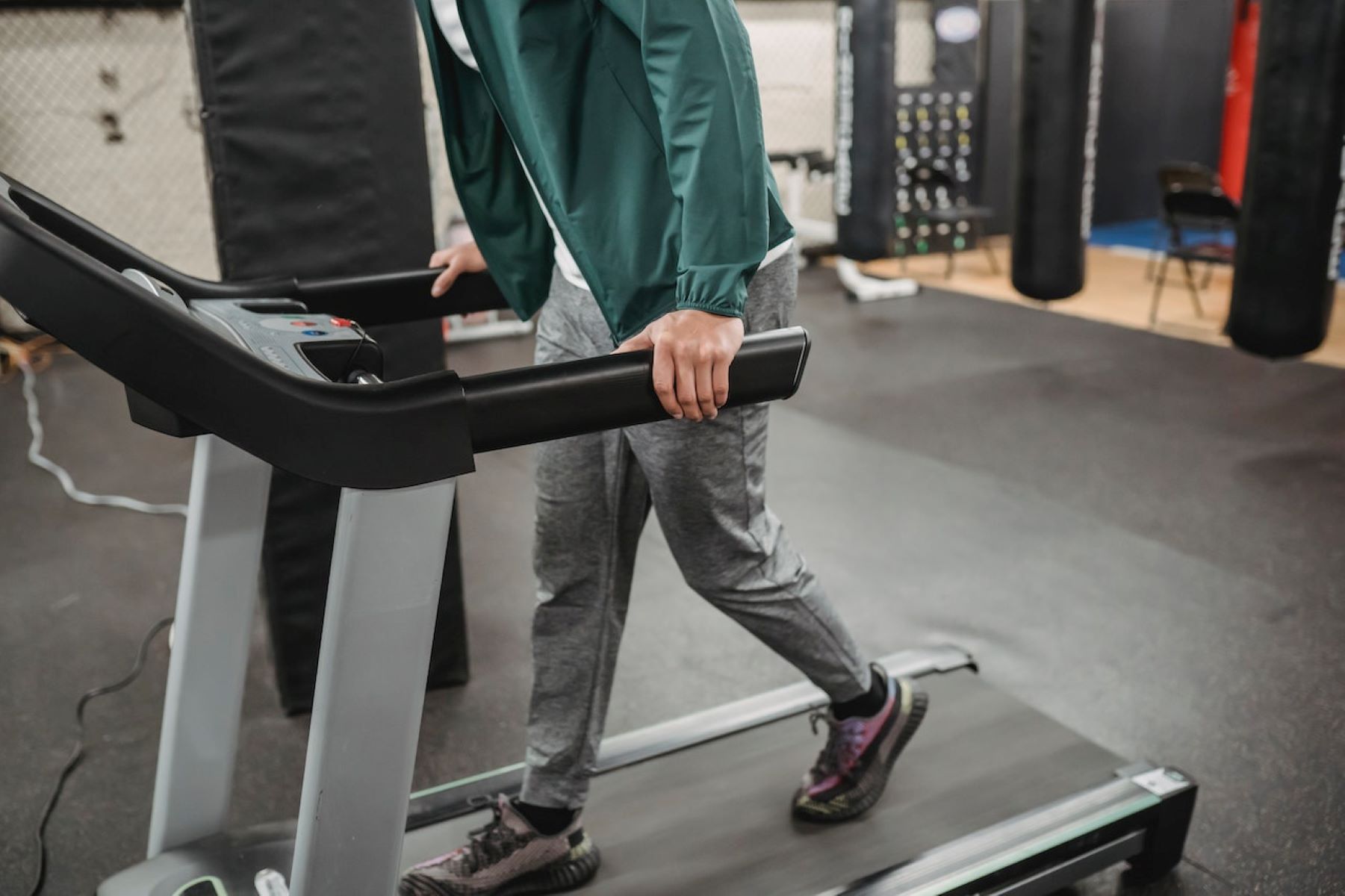Home>Misc>Featured>How Accurate Is The Treadmill Calorie Counter
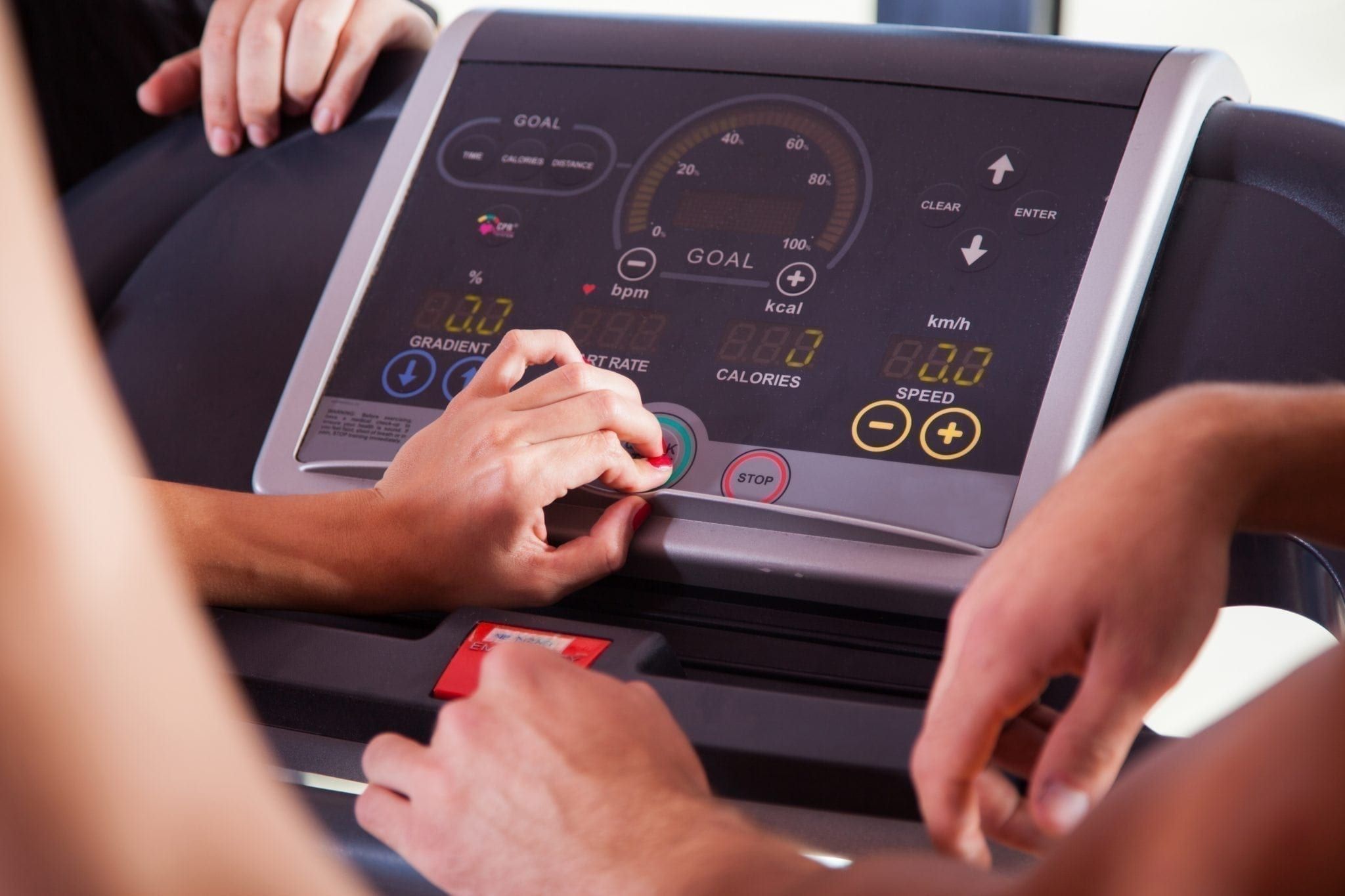

Featured
How Accurate Is The Treadmill Calorie Counter
Modified: January 2, 2024
Get the facts on treadmill calorie counters and discover how accurate they are. Featured article on understanding the accuracy of treadmill calorie counting.
Introduction
When it comes to fitness and weight management, understanding the number of calories burned during a workout is crucial. Many people turn to treadmills as a convenient and effective way to get their daily dose of cardio. However, a common question many treadmill users have is: how accurate is the treadmill calorie counter?
The treadmill calorie counter is a built-in feature that estimates the number of calories burned during a workout based on factors such as speed, incline, and user weight. While this feature can be useful for tracking progress and setting fitness goals, it is important to understand its limitations and factors that can affect its accuracy.
In this article, we will delve deeper into the world of treadmill calorie counters and explore the factors that can impact their accuracy. We will also compare treadmill calorie counters with other methods of estimating calorie burn and provide tips on how to get more accurate readings from your treadmill.
Keep in mind that the primary purpose of a treadmill is to provide a safe and effective form of cardiovascular exercise. While the calorie counter can be a helpful tool, it should not be the sole determinant of your fitness progress. However, understanding its accuracy can offer valuable insight into optimizing your workout routine and achieving your fitness goals.
Understanding Treadmill Calorie Counters
Treadmill calorie counters work by using an algorithm that combines your weight, speed, incline, and workout duration to estimate the number of calories burned. This estimation is based on averages and assumptions about the energy expenditure of various activities and the metabolic rate of an average individual.
However, it is important to note that treadmill calorie counters provide an estimate and not an exact measurement of calories burned. They are designed to give you a rough idea of the energy expenditure during your workout.
One of the main limitations of treadmill calorie counters is that they do not take into account your individual fitness level, body composition, or metabolism. This means that the calorie count may not be accurate for everyone. Individuals with higher muscle mass tend to burn more calories, while those with lower muscle mass or a slower metabolism may burn fewer calories than indicated by the treadmill.
Another factor to consider is that treadmill calorie counters do not account for the impact of factors such as age, gender, or fitness level, which can all influence calorie burn. For example, a younger person with a higher fitness level may burn more calories compared to an older person with a similar weight and exercise intensity.
Additionally, the accuracy of treadmill calorie counters can be affected by the quality and calibration of the machine. Treadmills that are not properly calibrated may provide inaccurate readings, leading to an overestimation or underestimation of the calories burned during a workout.
It’s essential to understand that the readings provided by treadmill calorie counters should be taken as a rough estimate and not as an absolute value. They can be a useful tool for tracking your progress and comparing different workouts, but they should not be solely relied upon for determining your overall calorie burn or weight loss goals.
In the next section, we will explore the factors that can affect the accuracy of treadmill calorie counters and how they compare to other methods of estimating calorie burn.
Factors Affecting Treadmill Calorie Accuracy
While treadmill calorie counters can give you a ballpark estimate of calories burned, several factors can affect their accuracy. Understanding these factors can help you interpret the readings more effectively and adjust your workouts accordingly.
- User Weight: The weight you input into the treadmill can significantly impact the calorie count. Heavier individuals require more energy to move their bodies, resulting in higher calorie burn. Conversely, lighter individuals may burn fewer calories for the same workout duration and intensity.
- Speed and Incline: The speed and incline settings on the treadmill directly impact the intensity of your workout. Generally, higher speeds and steeper inclines result in more calories burned. However, individual differences in fitness levels and effort exerted can influence the actual calorie burn achieved.
- Duration of the Workout: The longer you exercise on the treadmill, the more calories you are likely to burn. However, remember that the calorie counter’s estimate assumes a constant and steady level of effort throughout the workout. If you incorporate interval training or change the intensity throughout your session, the actual calorie burn can vary.
- Individual Fitness Level: Your fitness level plays a role in how efficiently your body burns calories. As you become more fit, your cardiovascular system becomes more efficient, requiring less energy to perform the same tasks. This can result in lower calorie burn compared to someone with a lower fitness level performing the exact same exercise.
- Gender and Age: Biological factors, such as gender and age, can also affect calorie burn. In general, males tend to have a higher muscle mass and a slightly faster metabolism, resulting in marginally higher calorie burn compared to females. Additionally, as we age, our metabolism tends to slow down, leading to a decrease in calorie burn.
- Body Composition: Lean muscle mass contributes significantly to calorie burn, even at rest. Individuals with higher muscle mass have a higher basal metabolic rate, meaning they burn more calories throughout the day. Treadmill calorie counters do not take into account body composition, so they may provide inaccurate readings for individuals with significant variations in muscle mass.
- Treadmill Calibration: The accuracy of the treadmill’s calibration can directly impact the accuracy of the calorie counter. If the treadmill is not properly calibrated, it may overestimate or underestimate your actual calorie burn. It is essential to ensure that your treadmill is calibrated regularly to obtain more accurate readings.
Keep in mind that these factors can vary from person to person, and their influence on the accuracy of treadmill calorie counters can be subjective. It is important to use the calorie counter as a reference point and not rely solely on its readings when tracking your progress or determining your calorie intake.
In the next section, we will compare treadmill calorie counters with other methods of estimating calorie burn to give you a broader perspective on their accuracy.
Comparing Treadmill Calorie Counters with Other Methods
While treadmill calorie counters are a popular tool for estimating calorie burn, it’s essential to understand how they compare to other methods of assessing energy expenditure. Here, we will explore some alternative methods and their pros and cons.
Heart Rate Monitors: Heart rate monitors are devices that measure your heart rate during exercise. Some heart rate monitors can estimate calorie burn based on heart rate data and user information. By tracking your heart rate, these devices provide a more personalized estimate of calorie burn compared to treadmill calorie counters. However, the accuracy of heart rate-based estimations can vary depending on factors such as individual heart rate response, exercise intensity, and the quality of the heart rate monitor.
Activity Trackers: Activity trackers, such as fitness bands or smartwatches, offer a comprehensive overview of your daily physical activity, including steps taken, distance traveled, and calories burned. These devices often use a combination of sensors, including accelerometers and heart rate monitors, to estimate calorie burn. While they can provide an overview of your overall activity levels, the accuracy of their calorie estimates can be affected by factors similar to heart rate monitors.
Metabolic Calculations: Metabolic calculations involve measuring oxygen consumption or gas exchange during exercise to estimate calorie burn. This method provides a more accurate measurement of energy expenditure, but it requires specialized equipment and expertise. Metabolic calculations are commonly used in research settings or by professionals conducting metabolic assessments. They offer a highly accurate estimation but are not practical for everyday use for the average treadmill user.
Online Calorie Calculators: Online calorie calculators use formulas and algorithms to estimate the number of calories burned during different activities, including treadmill workouts. These calculators often consider factors such as body weight, duration, and intensity of exercise to provide an estimation. While they can give you a rough idea of calorie burn, they lack the personalized data that heart rate-based methods or metabolic calculations can provide.
It’s important to remember that each method has its own strengths and limitations. While treadmill calorie counters may not be as accurate as metabolic calculations, they offer a convenient and readily available option for estimating calorie burn during your workouts. Combined with other methods, such as heart rate monitoring or activity tracking, you can gain a more comprehensive understanding of your overall energy expenditure.
In the next section, we will explore research studies conducted on treadmill calorie accuracy to provide further insight into their reliability.
Research Studies on Treadmill Calorie Accuracy
Several research studies have been conducted to evaluate the accuracy of treadmill calorie counters. While these studies provide valuable insights, it’s important to consider that findings may vary based on study design, sample size, and other factors. Here are some notable studies:
A study published in the Journal of Sports Sciences compared the calorie counts provided by treadmill calorie counters to those obtained using indirect calorimetry, a highly accurate method of measuring calorie burn. The study found that treadmill calorie counters generally overestimated calorie burn, especially at higher exercise intensities. The level of overestimation varied between individuals, highlighting the importance of considering personal factors when interpreting treadmill calorie readings.
Another study, published in the International Journal of Sports Medicine, examined the accuracy of treadmill calorie counters for different speeds, inclines, and user weights. The researchers found that treadmill calorie counters were more accurate at slower speeds and lower inclines compared to higher speeds and steeper inclines. Additionally, the accuracy varied based on user weight, with higher weights resulting in greater inaccuracies. The study emphasized the need for individual customization when using treadmill calorie counters.
While these studies highlight some limitations of treadmill calorie counters, it is worth noting that most research agrees on their relative inaccuracy compared to more precise methods like indirect calorimetry or metabolic calculations. However, it is important to consider personal factors and use treadmill calorie counters as a reference rather than a definitive measurement.
It’s essential to approach treadmill calorie counters with a critical mindset and use them in conjunction with other methods to gain a more comprehensive understanding of calorie burn. Additionally, tracking other fitness indicators such as weight, body measurements, and overall fitness progress can provide a better overall picture of your success and help you make informed decisions about your workouts and nutrition.
In the next section, we will provide some tips to help you get more accurate readings from your treadmill and enhance your overall workout experience.
Tips for Getting More Accurate Treadmill Calorie Readings
While treadmill calorie counters may not provide precise measurements of calorie burn, there are several steps you can take to improve their accuracy and get a better estimate of your energy expenditure. Here are some tips to consider:
- Enter Accurate User Information: Ensure that you input your correct weight into the treadmill, as this is a key factor in calculating calorie burn. If your weight changes significantly, update it accordingly to maintain accuracy.
- Calibrate the Treadmill: Regularly calibrate your treadmill to ensure that it is providing accurate readings. Follow the manufacturer’s guidelines for calibration or consult a professional if needed.
- Use a Heart Rate Monitor: Pairing your treadmill workout with a heart rate monitor can provide additional data for a more accurate estimate of calorie burn. Heart rate-based calculations take into account your individual physiological response to exercise.
- Focus on Intensity: Higher exercise intensity generally results in a higher calorie burn. Increasing the speed and incline of your treadmill workout can help you achieve a more challenging and calorie-burning session.
- Include Strength Training: Strength training builds lean muscle mass, which can increase your basal metabolic rate and lead to more calories burned throughout the day. Incorporate strength training exercises into your routine, either before or after your treadmill workout.
- Experiment with Interval Training: Interval training, alternating between high-intensity bursts and lower-intensity recovery periods, can boost calorie burn and overall fitness. Consider incorporating intervals into your treadmill workouts to increase the intensity and challenge your body.
- Track Your Progress: Keep a record of your workouts, noting the duration, intensity, and perceived effort levels. Over time, you can compare your calorie readings and track any changes or trends that may emerge.
- Consider Multiple Indicators: Don’t solely rely on treadmill calorie counters. Track other indicators of progress, such as changes in weight, body measurements, and overall fitness levels, to get a more comprehensive view of your progress.
Remember that the ultimate goal of using a treadmill is to engage in regular physical activity and improve your fitness. While calorie burn is an important aspect, it’s crucial to listen to your body, enjoy your workouts, and prioritize overall well-being.
In the final section, we will wrap up the article by summarizing the key points and providing a closing thought.
Conclusion
Understanding the accuracy of treadmill calorie counters is essential for making informed decisions about your fitness goals and tracking your progress. While treadmill calorie counters provide a convenient estimate of calorie burn, it’s important to remember that they have limitations and may not be entirely accurate for everyone.
Factors such as user weight, speed, incline, duration of the workout, fitness levels, and body composition can impact the accuracy of treadmill calorie counters. Additionally, research studies have shown that treadmill calorie counters tend to overestimate calorie burn, especially at higher exercise intensities.
Nevertheless, treadmill calorie counters can still be valuable tools when used in conjunction with other methods of estimating calorie burn, such as heart rate monitors or activity trackers. These devices can provide more personalized and comprehensive data about your energy expenditure.
To enhance the accuracy of treadmill calorie readings, it is important to enter accurate user information, regularly calibrate the treadmill, and consider other factors like heart rate and intensity. Additionally, focusing on overall fitness progress, tracking weight changes, and incorporating strength training can provide a more holistic approach to achieving your fitness goals.
Ultimately, it’s crucial to remember that the primary purpose of using a treadmill is to engage in regular physical activity, improve cardiovascular health, and enhance overall well-being. While tracking calorie burn can be useful, it should not overshadow the enjoyment and benefits of exercise itself.
As with any fitness journey, it’s important to listen to your body, make adjustments when necessary, and consult with professionals if needed. By using treadmill calorie counters as a reference point and considering various factors that can impact their accuracy, you can make more informed decisions about your workouts and progress towards your fitness goals.
